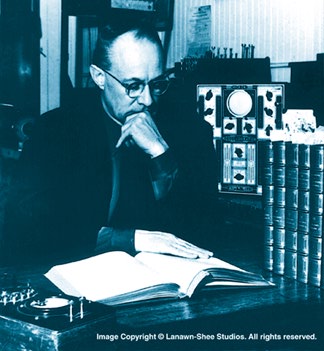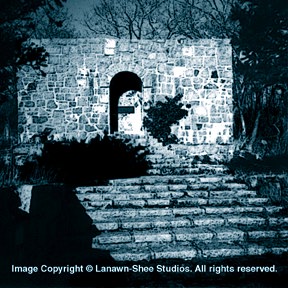

John Hays Hammond, Jr. and his Castle Museum |
So much about Jack's personal life has been reduced to rumor that it has fueled urban
legends proliferated by both the Hammond Castle staff* and the Internet. After Jack's death, a multitude of people claimed associations with him which were rarely refuted but were almost always untrue. Everything including his friendships, his professional ties, even the "so-called" stipulations of his Will and his subsequent burial have become absurdly speculated upon—a man who built his own castle provides great fodder for the wild imaginations of others. During his lifetime, Jack didn't help matters by mischievously exaggerating to reporters during interviews; he knew what made good press but that miscalculation has sadly allowed nothing but inaccuracies to dog his legacy. |
Copyright © 2003-2010 by John Dandola, Ltd. All rights reserved. |
John Hays Hammond, Jr. and his Castle Museum |
The nearly five years of research it took to write Hammond's biography, LIVING IN THE PAST, LOOKING TO THE FUTURE, finally set the record straight and reveals that the real events of Hammond's life
were much more interesting than the tall tales and his true legacy is much
more far-reaching than anyone had previously realized. John Hays Hammond, Jr., died on February 12, 1965, while in New York City attending a Board Meeting of R.C.A. His wife having pre-deceased him and having had no children,** he willed his castle to Cardinal Cushing and the Catholic Archdiocese of Boston. The Catholic Church continued to run it as a museum until Cushing's death. Then, unable and uwilling to maintain the property, they sold it to a non-profit corporation whose Board has changed, waxed, and waned over the past thirty years. The money which Jack left in trust for maintenance into perpetuity mysteriously dried up long ago and a great many of the furnishings and artifacts have been sold off for operating expenses. __________________________________________________________________________________________________________ * Recently the castle began offering tours given by an actress playing "Mrs. Hammond." Theatrics aside, the inescapable flaw in that concept is that Mrs. Hammond was so introverted and painfully shy that she would NEVER have given anyone a tour. In fact, if dinner parties were too large, she stayed in her room and never made an appearance. This is just one of the many ways in which the Hammonds are continually misrepresented to an unwitting public. ** Neither Jack nor any of his siblings had children; the Hammond lineage effectively ended with their generation and they are all now deceased. The perpetuated rumor claiming that direct descendants of the Hammond family still sit on the museum's Board of Directors could not be farther from the truth. _________________________________________________________________________________________________________ Rather than a museum, Hammond Castle now functions more as a wedding and corporate rental hall enhanced by several Renaissance Faires throughout the year and Halloween hauntings during October. It is still well worth a visit but be advised that the castle is often closed without warning on Saturdays and Sundays due to weddings. Weekday school tours are offered by appointment. |
Jack was buried on the museum grounds not far from the castle. He personally designed
the tomb so that it faced out to sea. Throughout 2008, the museum's Board of Directors began selling off parcels of the castle property to satisfy escalating financial debts. One of those parcels contained Jack's tomb—stipulated quite emphatically in his Will to remain his final resting place. But like so much of what has been done to his castle after his death, his burial wishes were also not honored. On November 24, 2008, Hammond's coffin was removed from its tomb and re-interred within the front walled garden near the castle drawbridge. |

Ironically, the man who built the new vault and supervised the moving of the body
is the son of the man who originally supervised the burial in the tomb in 1965.
Such a generational connection would have pleased Jack Hammond. But the disrespect
of being moved would not have pleased him in the least. |